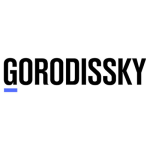A Russian applicant filed a trademark application for a combined colour (blue, red, green, grey) designation consisting of words, a figure, crossed ribbons and the words "your emergency service." The applicant obtained registration No 381613 in Classes 3 and 5.

The owner of a trademark "911 urgent assistance", registration No 676510 found that the registration No 381613 is contrary to his understanding of what is allowed and what is not. One of the arguments was that the figurative element shaped as a red cross imitates the emblem of the Red Cross and the flag of the International Association of Red Cross, i.e. contains an image reminiscent of the Red Cross against a white background. This similarity is capable of misleading the consumer with regard to the manufacturer of goods and also goes against public interest, principles of humanity and morals. According to the appellant, the consumer may think that the goods under that trademark are associated with activities of the Red Cross, which provides medical and humanitarian assistance. This association may be enhanced by the words "your emergency service" and figures "911" being a telephone number. The word element "Kids" in relation to goods in Classes 3 and 5 (cosmetics for animals, shaving lotions, aseptic wool etc.) is false and misleading with regard to the goods and their manufacturer.
The Collegium of the Chamber of Patent Disputes examined the appeal and noted that the figurative element of the disputed trademark



The Collegium also relied on the letter of consent from the Russian Red Cross which alone shows that the disputed trademark in no hinders the activities of the Red Cross.
The compared elements signify different ideas and have different configurations. The image of the Red Cross is evident and does not require further guessing as to what it is. The figurative element of the disputed trademark is elongated in space. It is inclined to one side and is in fact a ribbon waving in space.
There is no false information in respect of the manufacturer, nor does the disputed trademark evoke negative associations. As a result, there is no public abuse, or violation of the principles of humanity or morals. The appeal does not contain information on public polls that could confirm the statements of the appellant.
Hence, the Collegium concluded that the arguments of the appellant to the effect that protection of the disputed trademark should not have been granted because of similarity with the Red Cross emblem were baseless.
Vladimir Biriulin












